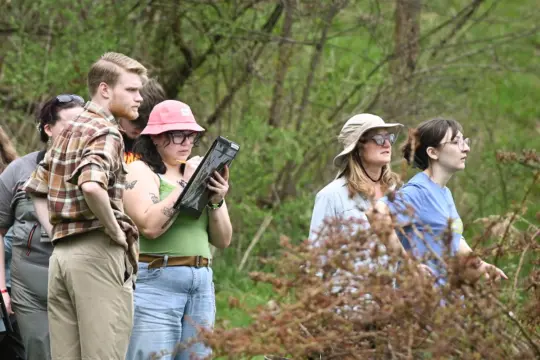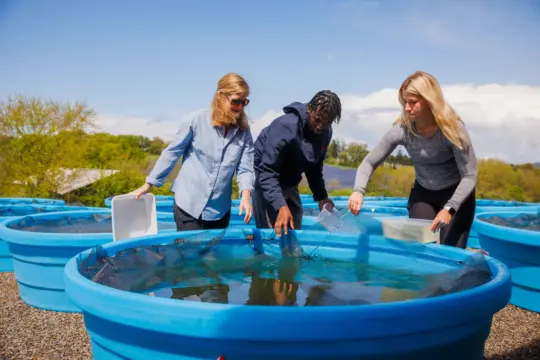Earth & Environmental Sciences
Exploring how science helps us understand our world and build a better environment for tomorrow.

Earth & Environmental Sciences Degree
What could matter more than Earth itself? As an earth and environmental sciences major at Susquehanna University, you will gain a deep understanding of the natural world, consisting of water, rocks, air and soil, as well as their dynamic interactions. You will also examine how those components impact all living things, as well as how humans impact the environments upon which all living things depend.
Study hydrology, geology, weather, soil science and more. Spend purposeful time outdoors at our 87-acre field station, where you’ll deepen your academic learning and develop a profound scientific understanding of the world around you. Gain intensive experience doing active lab work under the guidance of your professors and in close collaboration with your classmates. Choose from our numerous internships and research projects with local partners, such as the Chesapeake Conservancy or the Middle Susquehanna Riverkeeper Association. All these studies, activities and experiences combine to give you the skills you’ll need to tackle the environmental projects you’ll encounter in your career.
Your studies will culminate in a senior research project you’ll complete in close collaboration with a faculty member. The project allows you to apply many of the concepts you’ve learned in your classes, as well as new and exciting research findings, to a current environmental or earth science question. You’ll even have the chance to present your findings to an audience of professionals at a regional or national conference, which is guaranteed to impress your employers.
ENVIRONMENTAL SLEUTHING
Earth and environmental sciences professor Daniel Ressler uses the toolkits of biology and chemistry to examine the effects of fracking on Pennsylvania waterways.
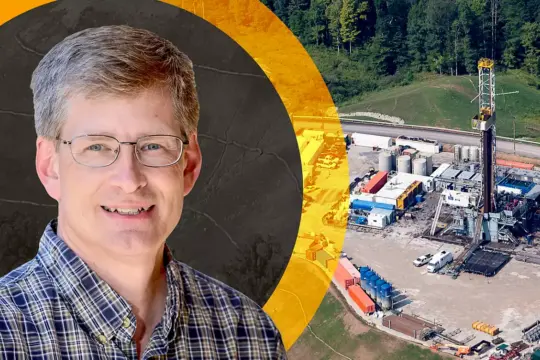
SUSQUEHANNA By the Numbers
More Than Metrics
30%
of majors attend graduate school
40%
of graduates find employment in the energy, sustainability or consulting industries
20%
of graduates work in the nonprofit, NGO or government sectors
10%
of graduates have careers in conservation and outdoor education
which environmental degree should I choose?

Earth & Environmental Sciences
Earth & Environmental Sciences examines the natural components of our environment and how they impact living things. It’s the scientific study of water, rocks, air and soil, and their dynamic interactions. You’ll take courses in hydrology, geology, weather, soil science and more, with a lot of exciting hands-on field and lab work, culminating in a research collaboration with faculty.

Ecology
Ecology is a branch of biology that examines how organisms interact with each other and their environment. You’ll take courses in biology and environmental sciences. Field and lab projects are an integral part of this major and every student completes a research project with faculty.
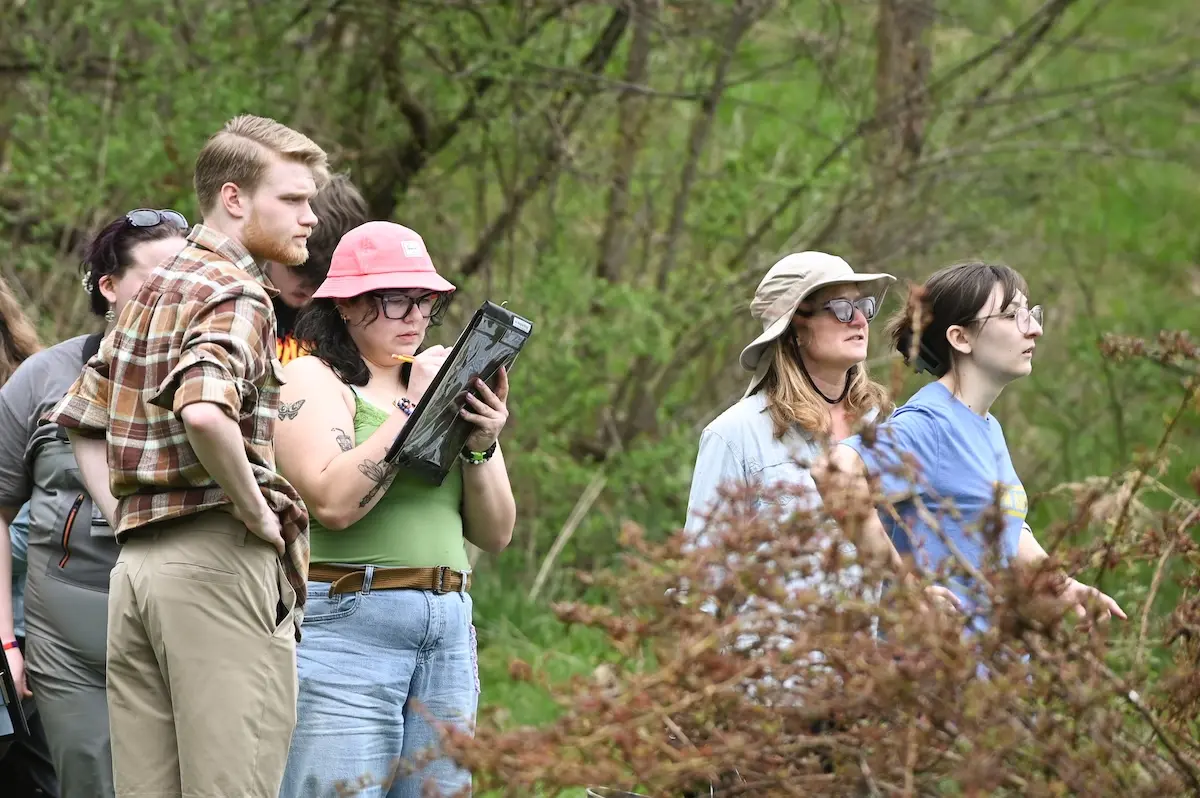
Environmental Studies
Environmental Studies is an interdisciplinary field that explores the complex relationship between humans and their environment. You’ll learn to address environmental challenges caused by humans, including climate change and environmental injustice. Courses include natural and social sciences, literature, religion, politics and business.
Explore Your Studies
Program Resources
A Glance Into Your Degree Pathway
With support from advisors and course planning tools, your time at Susquehanna is carefully designed to help you succeed. This example provides a glimpse into your degree experience, but you’ll have plenty of opportunities to customize your path with electives or study abroad programs that reflect your passions and career goals.
Fundamental concepts and principles of geology and the processes and materials that interact at the surface of the Earth. The course includes rocks and minerals, plate tectonic interactions, weathering and erosion, the cycling of materials through different environments, and how we use these resources. Same as ECOL-113. 4 SH. 3 lecture hours, 3 laboratory/field hours.
A basic introduction to data analysis, descriptive statistics, probability, Bayes’ Theorem, distributions of random variables and topics in statistical inference. (Students may earn credit for only one of the introductory statistics courses offered by the departments of management, psychology or mathematics.) 4 SH. CC: Analytical Thought.
Introduction to watersheds and water resources. Study the distribution and variation in water resources (lakes, rivers, groundwater) and the historical impact of water resources on societies past and present. Topics include: surface water hydrology, fluvial geomorphology, hill slope processes, water budgets, stream flow, water allocation law, water conflicts, and surface water and groundwater interactions. Prerequisite: EENV-101 or ECOL-100 or EENV-113. 4 SH. 3 lecture hours, 3 laboratory/field hours. CC: Team Intensive.
Fundamental laws and principles, atomic structure and periodicity, bonding, molecular structure, stoichiometry, chemical reactions, energy, equilibrium, thermodynamics and nuclear chemistry. Students may receive credit for only one of the three introductory Chemistry I courses, CHEM-103 or CHEM-111. 4 SH. 3 lecture hours, 3 laboratory hours (taken as CHEM-105, not a separate credit/grade). CC: Scientific Explanations.
Differentiation and integration of polynomials, exponential, logarithmic and trigonometric functions, rules of differentiation, the Mean Value Theorem, L’Hôpital’s Rule, the Fundamental Theorem of Calculus and applications. 4 SH. CC: Analytical Thought.
A comprehensive overview of the atmospheric processes responsible for observed weather patterns. This course provides students with an understanding of radiation and energy budgets, cloud formation, precipitation processes, surface and upper-level winds, the global circulation, and the development of mid-latitude cyclones and severe weather. 4 SH. 3 lecture hours, 3 laboratory/field hours.
Properties of gases, liquids, solids and solutions, kinetics, acids, bases, buffers, solubility, complex ion equilibria, electrochemistry, and descriptive and coordination chemistry taught in a team-based format. Students may receive credit for only one of the three introductory chemistry II courses: CHEM-102, CHEM-104 or CHEM-232. Prerequisite: CHEM-103 or CHEM-111. 4 SH. 3 lecture hours, 3 laboratory hours (taken as CHEM-106, not a separate credit/grade).
Introduces the macroscopic phenomena of the physical universe. Applies concepts of force, work, energy and momentum to waves, fluids and thermodynamics. Laboratory stresses methods of acquiring data, computer data processing and analyzing the causes of errors. Uses high school algebra and trigonometry as the language. 4 SH. CC: Scientific Explanations.
Earth & Environmental Sciences
Choose from a variety of elective courses within this program to customize your goals.
Earth & Environmental Sciences
Choose from a variety of elective courses within this program to customize your goals.
Earth & Environmental Sciences
Choose from a variety of elective courses within this program to customize your goals.
Introduces students to environmental research, reading and writing in the context of a collaborative or independent research project. Prerequisite: Instructor’s permission. 4 SH.
Earth & Environmental Sciences
Choose from a variety of elective courses within this program to customize your goals.
A continuation of collaborative or independent research with an emphasis on written and oral presentation of data and explanation of results. Prerequisite: EENV-510 or instructor’s permission. 4 SH. Capstone. CC: Writing Intensive.
Earth & Environmental Sciences
Choose from a variety of elective courses within this program to customize your goals.
Modern society functions with incredible resources and conveniences. Some of this progress has come at a great environmental price. This course investigates the scientific principles of the geosphere, hydrosphere, biosphere, and atmosphere, and examines the environmental issues that our society faces. Topics include sustainability,ecology, resources, energy, pollution, wastes, and approaches at living in a more sustainable way. 4 SH. 3 lecture hours, 3 laboratory/field hours. CC: Scientific Explanations.
Investigation of selected natural hazards, including volcanic eruptions, earthquakes, severe weather and landslides that affect and may be affected by humans. Topics are interrelated by case studies, discussion of current issues and laboratory and field exercises. 4 SH. 3 lecture hours, 3 laboratory/field hours. CC: Scientific Explanations.
This course focuses on life from its origin on this planet to its present diversity of species. Students learn about the fundamental physical and biological changes that have shaped and influenced the Earth system since its formation 4.6 billion years ago. Topics addressed include physical concepts that deal with geologic time and stratigraphic relationships, plate tectonics and nutrient cycling. Discussions cover such topics as the origin of life, evolutionary processes, the expansion of biodiversity, the radiation of organisms in the oceans, the conquest of land, mass extinctions, dinosaurs and the rise of humans. 4 SH. 3 lecture hours, 3 laboratory/field hours. CC: Scientific Explanations.
Introduction to basic concepts in meteorology including temperature, pressure, precipitation, winds, fronts, severe weather, forecasting and atmospheric measurements. The focus is on observing the atmosphere and explaining our observations. Labs include weather map analysis, lab experiments and field trips. 4 SH. 3 lecture hours, 3 laboratory/field hours. CC: Scientific Explanations.
Modern society relies on cheap and abundant energy for almost every aspect of daily life, from transportation to entertainment. Where does this energy come from? How much do we consume? How will we meet our future energy needs? What are the consequences of our energy use? These questions will be addressed as energy use and its impact on the environment is explored. Topics include the scientific principles that define energy and its transformation, society’s current reliance on fossil fuels, climate change, and alternative and sustainable energy sources. 4 SH. 3 lecture hours, 3 laboratory/field hours. CC: Scientific Explanations.
Fundamental concepts and principles of geology and the processes and materials that interact at the surface of the Earth. The course includes rocks and minerals, plate tectonic interactions, weathering and erosion, the cycling of materials through different environments, and how we use these resources. Same as ECOL-113. 4 SH. 3 lecture hours, 3 laboratory/field hours.
Introduction to oceanography. The processes that control the formation and function of the oceans. The course focuses on food, mineral and energy resources associated with the ocean and societies’ influence on those resources. 4 SH. 3 lecture hours, 3 laboratory/field hours. CC: Diversity Intensive, Ethics Intensive, Scientific Explanations.
Introduction to watersheds and water resources. Study the distribution and variation in water resources (lakes, rivers, groundwater) and the historical impact of water resources on societies past and present. Topics include: surface water hydrology, fluvial geomorphology, hill slope processes, water budgets, stream flow, water allocation law, water conflicts, and surface water and groundwater interactions. Prerequisite: EENV-101 or ECOL-100 or EENV-113. 4 SH. 3 lecture hours, 3 laboratory/field hours. CC: Team Intensive.
A comprehensive overview of the atmospheric processes responsible for observed weather patterns. This course provides students with an understanding of radiation and energy budgets, cloud formation, precipitation processes, surface and upper-level winds, the global circulation, and the development of mid-latitude cyclones and severe weather. 4 SH. 3 lecture hours, 3 laboratory/field hours.
An overview of the Earth’s past, present and future climate. Topics include climate forcing, response and feedbacks; observed climate change; climate data; anthropogenic climate change; and climate change treaties. Prerequisite: sophomore standing. 4 SH. CC: Interdisciplinary, Writing Intensive.
Selected topics vary depending on instructor, student interest and new advances in environmental science. Topics might include watershed modeling, geology of Pennsylvania, meteorology or the natural history of the Susquehanna River basin. Prerequisite: Earth and environmental sciences major or minor, environmental studies major or minor, ecology major or minor. 1-4 SH.
An introduction to the properties, classification and nomenclature of soils, sediments and sedimentary rocks. Discusses processes that create, transport, deposit and lithify sediments. Students examine depositional environments where sediments form and accumulate, the properties of sedimentary rocks and the stratigraphic framework of sedimentary successions. Prerequisite: EENV-113. 4 SH. 3 lecture hours, 3 laboratory/field hours. CC: Writing Intensive.
This course will examine the Susquehanna River drainage basin from multiple perspectives including its geologic history, ecologic relationships and influences throughout the basin, the historical colonization and use of resources within the basin, and our recent response to the environmental issues that currently plague the system. Through a multidisciplinary approach, we will begin to better understand this complex environment and its future outcome. Prerequisites: EENV-101 or ECOL-100 and EENV-113. 4 SH. 3 lecture hours, 3 laboratory/field hours. CC: Ethics Intensive and Interdisciplinary.
An overview of energy use, its effect on the environment and the potential for sustainable energy solutions. Traditional, non-sustainable energy production from fossil fuels is first described in terms of energy efficiency, environmental impact and available reserves. This is followed by a description of individual sustainable energy technologies with a focus on the underlying science, energy production rates, viability and potential limitations. Specific technologies that are discussed include wind turbines, solar thermal systems, solar photovoltaics, hydropower, wave and tidal energy capture, and geothermal heating. Prerequisites: sophomore standing. 3 lecture hours, 3 laboratory/field hours. 4 SH. CC: Interdisciplinary.
An introduction to Geographic Information Systems (GIS) theory, software and practical application. Students will use GIS software to organize, edit, analyze and display geographic data to develop new understanding and interpretation of both natural and human landscapes and resources. Mapping exercises and student projects will be used to develop skills in data management, spatial analysis and estimation (geostatistics), terrain analysis, and spatial modeling. Prerequisite: sophomore standing. 4 SH. 3 lecture hours, 3 laboratory hours. CC: Interdisciplinary.
Methods of near-surface geophysical explorations with emphasis on solving environmental and geotechnical problems. Students learn the basic physical variation in Earth and non-Earth materials and how these variations may be used to discern what lies beneath the Earth’s surface. Examples of near-surface geophysical applications include detection of contaminant plumes, buried metallic objects, variations in geological materials, aggregates and mining, forensics, archaeology, and hydrogeology. Prerequisites: EENV-113 Geology & the Environment and MATH-111 Calculus I. 4 SH. 3 lecture hours, 3 laboratory/field hours.
An introduction to air quality and air pollution issues from the regional scale to the global scale. This course examines the various types and sources of air pollutants and the effects of air pollution on health, welfare and the environment. Specific topics include acid deposition, tropospheric and stratospheric ozone, visibility degradation, air pollution meteorology, and regulatory aspects of air quality. Laboratory experiments focus on air-quality measurement strategies. Prerequisites: EENV-240, General Chemistry I (CHEM-103, or -111), General Chemistry II (CHEM-104, or 112), or instructor’s permission. 4 SH. 3 lecture hours, 3 laboratory/field hours.
Wetlands are complex environments that are controlled by chemical, biological and physical interactions. The course explores the structure, function, management and jurisdictional delineation of non-tidal freshwater wetlands. Lecture material covers the history of wetlands use/abuse, current definitions and analysis of the common indicators of wetland function; hydrology, soils and vegetation. The laboratory consists of plant identification, techniques for hydric soil analysis, identification of wetland hydrology indicators using current methodologies for delineation of jurisdictional wetlands. Same as ECOL-380. Prerequisite: CHEM-104. 4 SH.3 lecture hours, 3 laboratory/field hours. CC: Writing Intensive.
Soil science is the exploration of the organic and mineral material that forms thin layers where atmospheric, biological and geological interactions occur. Students study the materials that make up soil; their relationship to each other; water and air interactions; and the biological, chemical and physical processes that are at work in soil. The course also explores how various cultures have used and abused this natural resource and how different diversity markers, such as sexual orientation, ethnic background, global residence and socioeconomic status, have affected the science and participation in federal support programs. Prerequisite: EENV:113 or instructor’s permission. 4 SH. 3 lecture hours, 3 laboratory/field hours. CC: Diversity Intensive.
A comprehensive study of groundwater and the technologies that locate, extract and protect this resource. Emphasizes practical knowledge, developing theoretical principles when applicable. Includes origin and movement of groundwater, exploration techniques and groundwater computer modeling. Prerequisites: EENV-101 or ECOL-100, EENV-113, and MATH-111. 4 SH. 3 lecture hours, 3 laboratory/field hours.
Chemical reactions in the atmosphere, land surface and groundwater determine the distribution of both beneficial and toxic materials on earth that may affect resource distribution and human health. Chemistry of Natural Waters examines the elements and reactions that govern the mobility, stability and distribution of nutrients, salts and toxins in freshwater, marine, atmospheric and groundwater systems. Chemical analysis techniques, field methods, computer applications and problem-solving are important components of the course. Prerequisites: CHEM-104. 4 SH. 3 lecture hours, 3 laboratory/field hours.
Introduces students to environmental research, reading and writing in the context of a collaborative or independent research project. Prerequisite: Instructor’s permission. 4 SH.
A continuation of collaborative or independent research with an emphasis on written and oral presentation of data and explanation of results. Prerequisite: EENV-510 or instructor’s permission. 4 SH. Capstone. CC: Writing Intensive.
Individual students select a contemporary environmental topic to investigate in depth and propose their plan of study to the department for approval. Each student is assigned a departmental faculty mentor to oversee the project. Projects require extensive literature searches accompanied by oral and written presentations. Prerequisites: Junior or senior standing and department approval of project. 4 SH.
Individual student work in private industry or public agency. Open only when positions are available. The student, employer and the department internship coordinator must complete the student learning contract prior to the end of the drop/add deadline. Oral and written presentations and employer’s written evaluation are required. Prerequisites: Junior or senior standing and department permission. May be repeated for credit. 2-4 SH. Capstone.
Independent research projects in the earth and environmental sciences. Prerequisites: Junior or senior standing and department permission. 2 SH. Capstone.
Participate in another institution’s summer field program and transfer the credits to satisfy the capstone experience requirement in earth and environmental sciences. Acceptable programs are those that are three to six weeks in length and include field instruction, independent projects and a final presentation of the completed work. Requirements to be met in residence at Susquehanna include attendance at capstone class meetings and completion of projects assigned therein, to include both written and oral presentation of the work. Prerequisite: Department permission. 2-4 SH. Capstone.
Learning Goals
- Understand the scientific method and how it is applied in the context of a discipline.
- Understand the earth system, the connections between abiotic and biotic systems, and the effect of human society on the natural system. Understand the historical context of environmental awareness.
- Application of classification systems: vocabulary, observation and categorization.
- Scale interaction within space and time on earth science processes and outcomes.
- Geographic relationships of Earth, science processes, landforms and materials and comprehension of methods to relate these relationships.
- Data, plot and map interpretation and construction.
- Discipline-appropriate methods for observation, classification, characterization and description using relevant technologies and telemetries.
- Development of discipline-appropriate synthesis of readings, laboratory work and course material to produce original scientific understanding.
Double-counting restriction
Students in the Earth and Environmental Sciences department may double-count a maximum of 16 semester hours toward another major or minor. Students may not double major in Earth and Environmental Sciences and Ecology.
Major in Earth & Environmental Sciences
All majors must complete the department foundation courses, a choice of distribution courses, and the corollary science and mathematics courses listed below. To satisfy degree requirements, courses in the Department of Earth and Environmental Sciences must be completed with grades of C- or higher. Students who change majors after completing EENV-102, EENV-103, EENV- 104, EENV-105 or EENV-213 may substitute that course in place of EENV-101 in the introductory sequence.
16 Department Introductory Sequence
- 4 EENV-101 Environmental Science
- 4 EENV-113 Geology and the Environment
- 4 EENV-220 Water Resources
- 4 EENV-240 Introduction to Meteorology
12 Distribution Requirements: one course each from 3 of the following 4 categories
Water Distribution
- EENV-380 Wetlands Analysis
- EENV-420 Groundwater Hydrology
Geology Distribution
- EENV-283 Sedimentology/Stratigraphy
- EENV-313 The Susquehanna River
Surface Distribution
- EENV-370 Environmental Geophysics
- EENV-383 Soil Science
Climate/Energy Distribution
- EENV-242 Climate and Global Change
- EENV-332 Sustainable Energy Resources
8 Electives
Choose 8 SH from additional courses in the distribution list above or the following elective courses:
- 4 ECOL-201 Ecosystems
- 4 EENV-250 Topics in Earth and Environmental Sciences
- 4 EENV-360 Geographic Information Systems
- 4 EENV-373 Air Quality
- 4 EENV-430 Chemistry of Natural Waters
- 4 CHEM-221 Organic Chemistry I
- 4 BIOL-408 Aquatic Ecology and BIOL-409 Aquatic Ecology Laboratory
20 Corollary Courses
- 8 Choose two of the following four options:
- BIOL/ECOL-220 Biostatistics OR MATH-108 Introduction to Statistics
- MATH-111 Calculus I
- MATH-112 Calculus II or MATH-201 Linear Algebra
- 4 General Chemistry I (Choose from: CHEM-103 or CHEM-111)
- 4 General Chemistry II (Choose from: CHEM-104 or CHEM-232)
- 4 Introductory Physics I (Choose from: PHYS-202 or PHYS-204)
4 Senior Research: EENV-510 Senior Project I
4 Capstone Experience:
- EENV-511 Senior Project II
- or 4 SH from an approved Capstone experience in another department
For the purposes of calculating the required 2.00 minimum GPA in the major, the Earth & Environmental Sciences Department uses all of the major courses with the EENV prefix.
Double-counting Restriction
Students may double-count a maximum of 8 semester hours toward another major or minor.
Honors in Earth and Environmental Sciences
The departmental honors program encourages and recognizes superior academic performance in earth and environmental sciences. To graduate with departmental honors, earth and environmental sciences majors must:
- Maintain a cumulative GPA of 3.25 and a GPA of 3.50 in Earth and Environmental Science courses.
- Earn a score of 75% or higher on the department comprehensive exam.
- Earn an A- or higher in both EENV-510 and EENV-511.
- Pass an oral comprehensive examination of their thesis in their final semester.
Minor in Earth & Environmental Sciences
The minor requires 20 semester hours, with grades of C- or better, from among the courses in the major. No more than 8 SH in 100-level EENV courses may be applied toward the minor.
- Environmental consultant
- Environmental scientist
- Natural resource manager
- Geographical Information System (GIS) specialist
- Environmental educator
A NEW WAY TO RESTORE ANCIENT MOSAICS
Imagine bringing an ancient Roman site back to life. That’s exactly what Ahmed Lachhab, earth and environmental sciences professor, did when he helped archeologists in Morocco using the same techniques he did to study lakes in Pennsylvania.

Center for Environmental Education & REsearch
Earth & Environmental Sciences at the Ceer
Susquehanna University’s state-of-the-art Center for Environmental Education and Research (CEER) is the nexus of Susquehanna’s research and conservation efforts.
Students pursuing a degree in the earth & environmental sciences program will engage in multiple unique learning experiences at the CEER including:
- Learning geophysics with buried objects.
- Getting involved at the Climate Station.
- Gaining well field and water table location experience.
- Building Beaver Dams: man-made structure experiments meant to test the decrease of the movement of sediment to other streams that move into the Susquehanna River.
- Working alongside Freshwater Research Institute and Chesapeake Staff to develop environmental education.
- Participating in internship opportunities.
- Learning through additional projects and class experiences ranging from PERC tests to firing pottery and beyond.
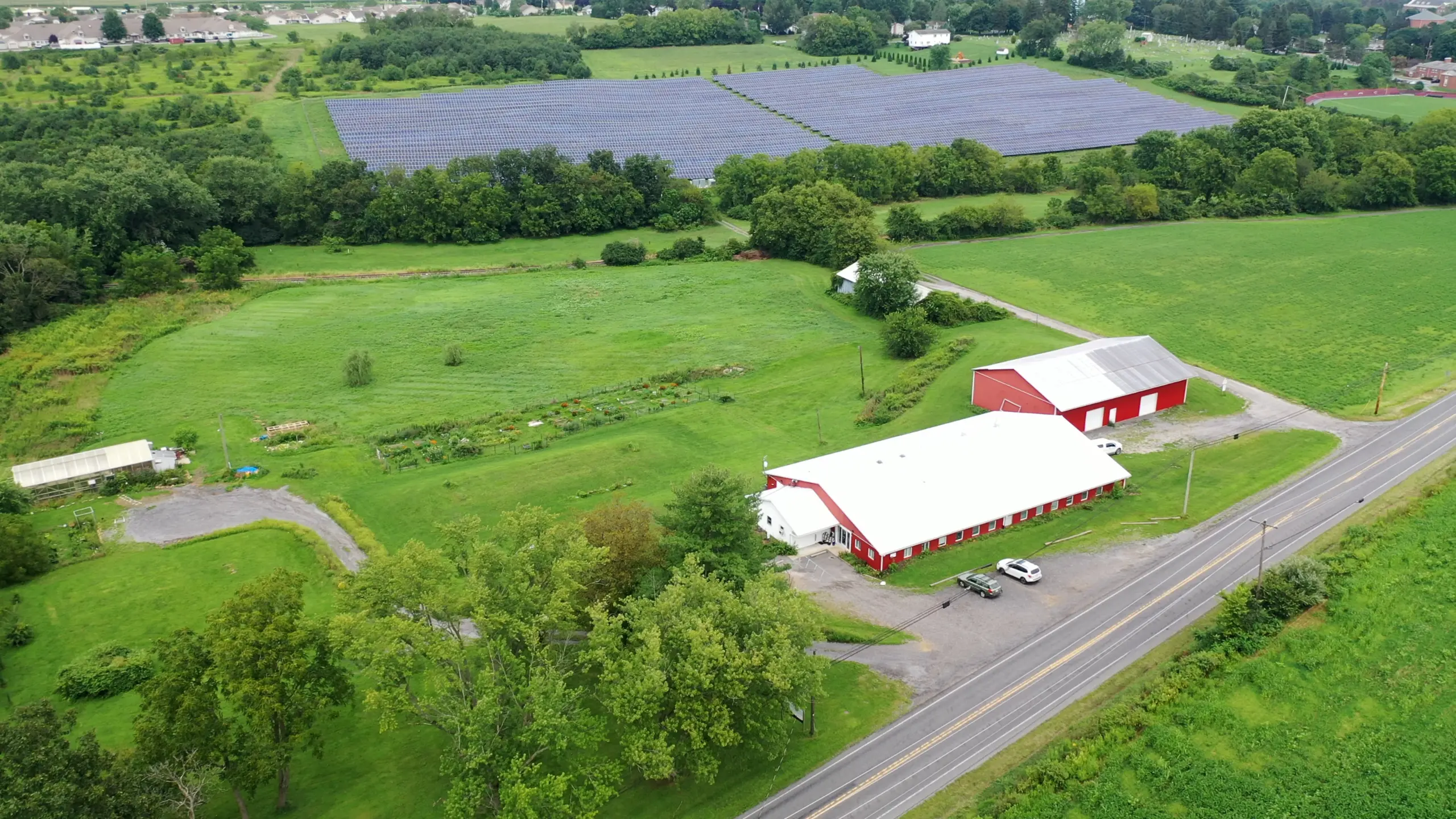
Recent Employers
Beyond Susquehanna
Where Passion Meets Purpose
Straight from the Nest


“My earth & environmental science major has prepared me well for my career beyond Susquehanna through hands-on labs in addition to lectures. We apply what we learn in the classroom out in the field. The program covers a strong mix of environmental science, geology, water resources and meteorology.”
— Ainslee Binkley ’26
“One thing that is unique about Susquehanna’s campus is that we are really close to a lot of environmental features in the area. We are located along the Susquehanna River, and that gives me a lot of opportunities to explore different labs and different ways to analyze the river and landscapes around us.”
— Olivia Weaver ’25
Meet the Faculty
TAKE A VIRTUAL TOUR
Launch Natural Sciences CenterYOU MAY ALSO BE INTERESTED IN
See the full list of related programs on the School of Natural and Social Sciences page.
Have Questions?
Contact Us
Start your journey.









